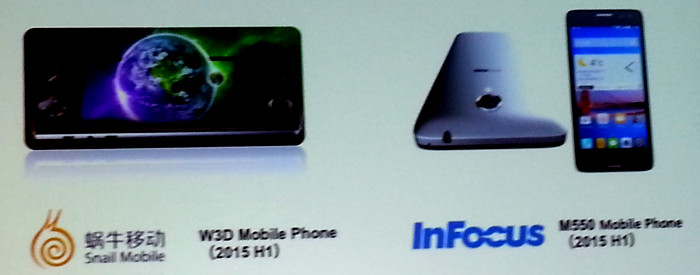I could not cover all the news from NAB 2015, but I can provide some impressions based on the companies I did meet with. You can see some of this coverage in videos posted from the event as well.

Overall, I was looking at advancements in high dynamic range (HDR), 3D, virtual reality, LED displays, projection, professional monitors and the 8k ecosystem – and there were interesting developments in each of these areas.
For example, Technicolor described its good, better and best approach to HDR content creation. Good allows an automated approach to remastering standard definition content to HDR, which is great for legacy content. The better approach builds on the good conversion to allow a colorist to intervene to optimize the conversion. In reality, Technicolor believes most legacy conversion projects will feature a mixture of these two. The best approach is typically going to be applied to new content and allows a full suite of tools to be used from content creation through the post production process.
Technicolor is also leading the UHD Alliance efforts to specify a distribution format for HDR content and also offers set top boxes that will support decoding of the HDR content.
Dolby was at NAB showing its HDR production workflow aimed at new content creation. The company also showed the new 65” Vizio UDTV which is the first one to support Dolby Vision HDR decoding. Availability of the 65” and 120” models has not been announced but is supposed to be “soon”. A 2000 cd/m² monitor is also expected to be available from unnamed partners soon as well.
A company called goHDR is proposing a method for capturing “scene referred” HDR content at the camera and allowing this to be available through the production chain. Basically, it wants to capture the full 14 to 16 f-stops of dynamic range of the content without modification by encoding the luminance and chroma separately in off-the-shelf 8 or 10-bit encoders and merging into a single data stream. The alternative approach of using the PQ (perceptual quantizer) curve approved by SMPTE, is a display-referred approach that reduces the dynamic range of the acquired content at the camera to a 10-bit or 12-bit stream based on the capabilities of the intended output display (mostly in terms of peak luminance).
On the other hand, Canon showed a live demo using its new 15 f-stop C300 Mark II camera capturing content and applying the PQ curve at the camera. This was delivered to two new 24” HDR monitors. One showed how a standard dynamic range image can be extracted while the other showed the HDR image. Canon also revealed a prototype of a 2000 cd/m² HDR monitor.
Sony showed OLED 4k monitors in a side by side demo of SDR vs. HDR graded content. (See the video Sony Shows OLED 4K HDR Monitor).
In 8k, Japanese companies continue to push toward their goal of broadcasting the 2020 Olympics in 8k via satellite, cable and hybrid terrestrial broadcast methods. The first satellite-based 8k trial broadcasts are to start in 2016. We saw a new studio 8k camera from Ikegami, a new 8k ENG camera from Hitachi, and a new 55” 8k display from Astro Design (see video – Astro Design Shows First 55-inch 8k Display 2). The equipment ecosystem is coming together but the focus on more pixels may become a significant issue in the near future. With HDR coming to the market, these images look much more impressive than 8k images, which I personally find less compelling, as they are always being shown on low contrast displays.
Glasses-free 3D is doing just fine in China said a group of companies in a session on the topic. New smartphones are coming to market in China soon, some with eye tracking, with US distribution being discussed. I was surprised to see InFocus will be one of the companies bringing a glasses-free 3D smartphone to market. (Of course, InFocus has Chinese investors these days – Man. Ed.)

In LED video walls, we saw 1.2mm pitch walls from SiliconCore, Leyard, Hibino and Unilumen that looked very nice indeed. Unilumen showed the smallest pixel pitch demo at 0.8mm (photo). Planar also used NAB to enter the LED video wall space with a new series of products at 1.6, 1.9, 2.5 and 3.1 mm pitches. These looked really good and are the first that offer front access (via a magnetic attach mechanism) and off-board electronics. And, they are the only LED video wall that is ADA compliant, meaning they extend less than 4” from the wall.

We also saw new camera top monitors from Marshall Electronics, along with rack-mount monitors (1, 2, 3 or 4 monitor versions) from Marshall and TVLogic. TVLogic also launched a new line of studio wall displays ranging in size from 17.3” to 55”.
Virtual Reality and 360-degree capture devices were quite prevalent as well. Consumer level rigs to high end professional rigs were observed at about 8-10 different places on the show floor, with many showing content on the Samsung Gear VR or Oculus headsets. Some content is 2D and some 3D. 2D content is easier to capture and stitch together, but the 3D content is more compelling – if done well. This is how 3D is going to come back to life – via a VR headset.
We also learned about new projector offerings from Christie and Barco. Our subscribers can read more about this and all the other in depth news from NAB in our upcoming NAB Special report. Stay tuned. – Chris Chinnock

